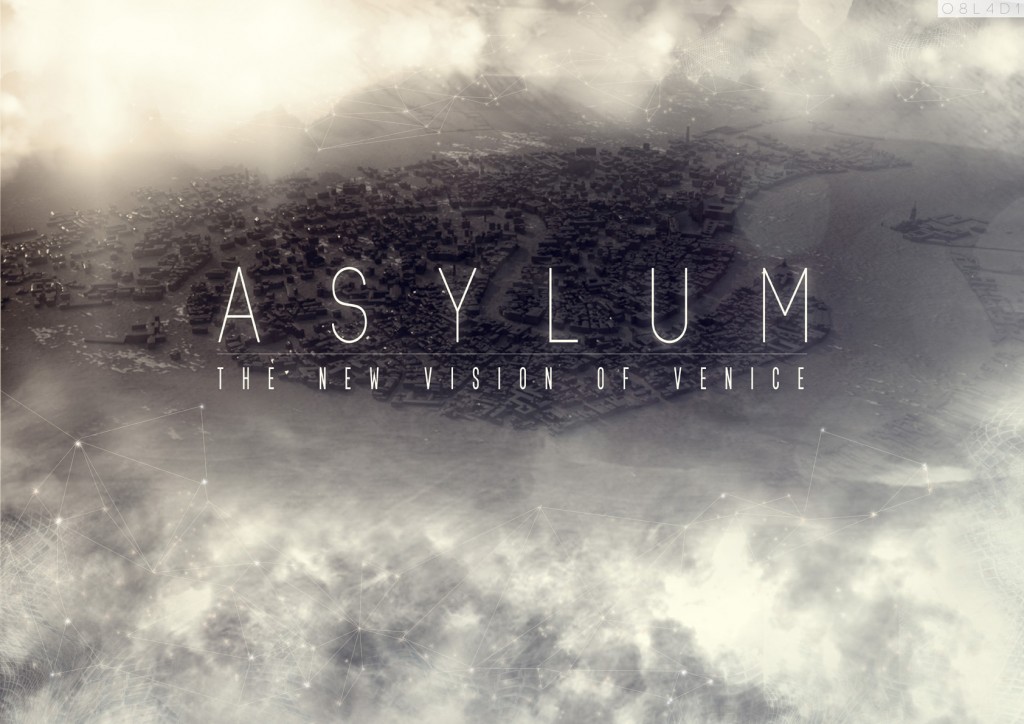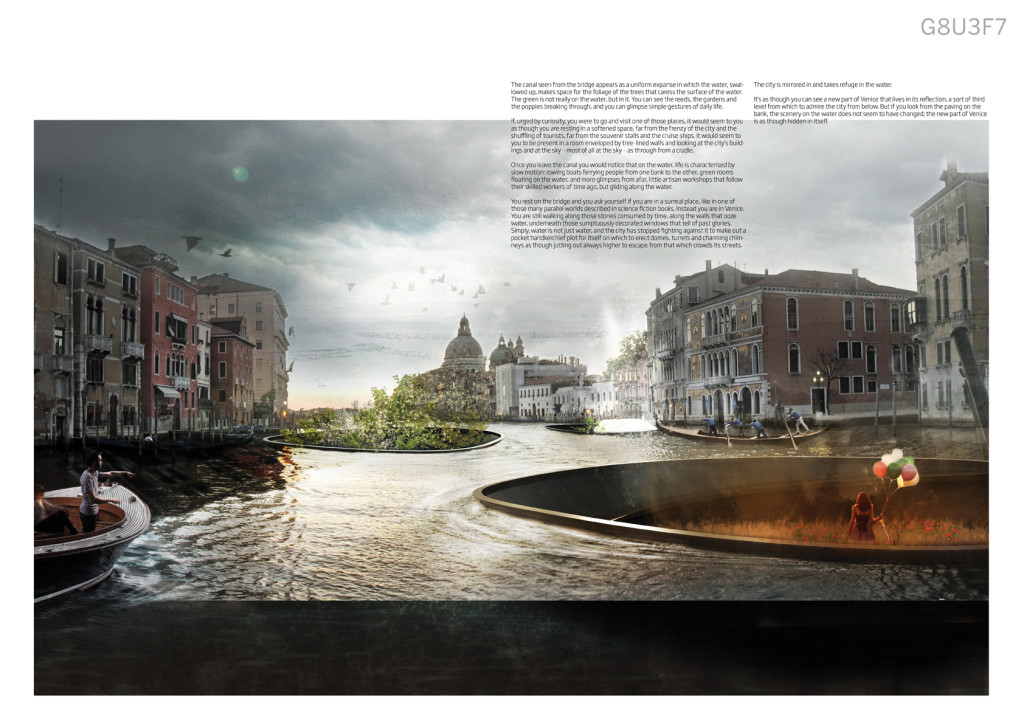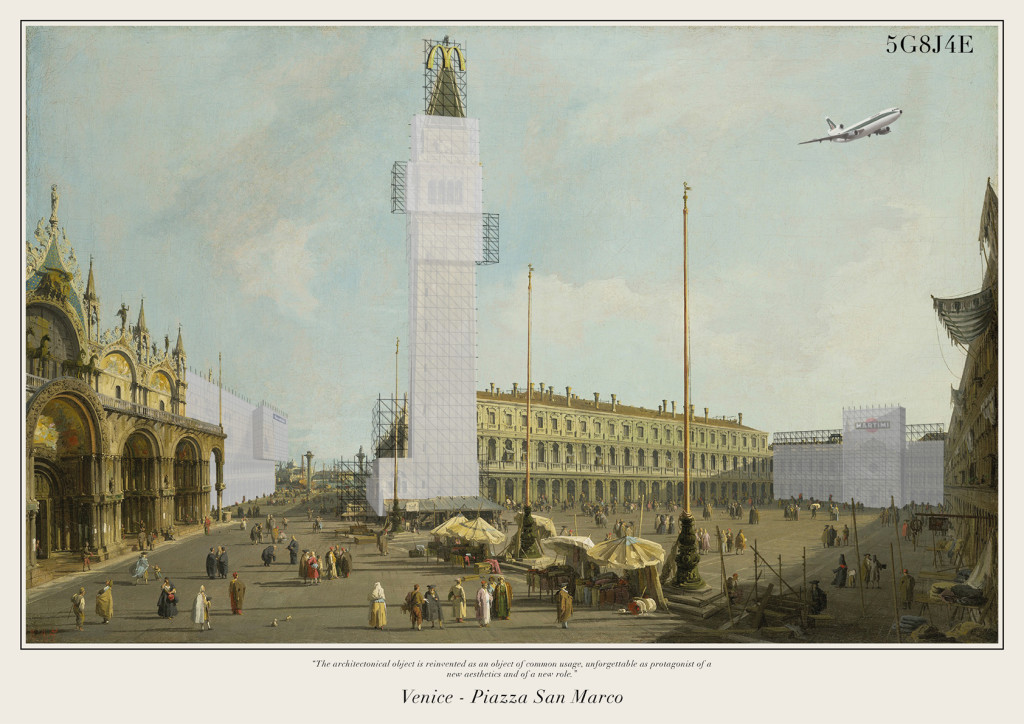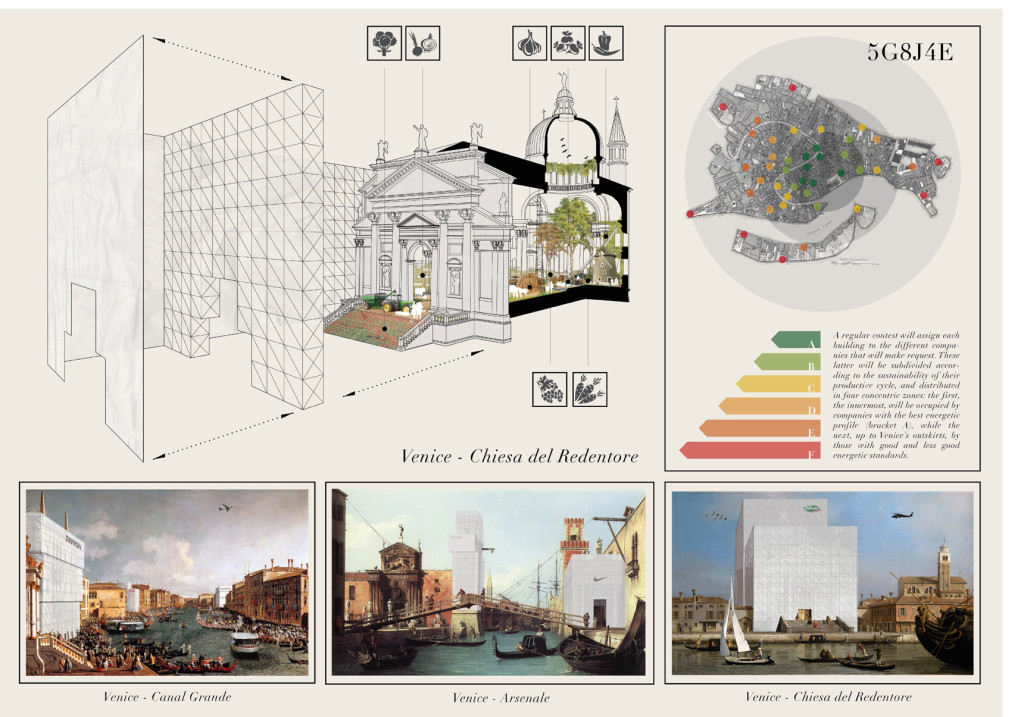Info:
Title: VENICE SECOND PRIZE // Venice - Code: 5G8J4EContest: Venice / 2011
By: O. Di Manno / L. Catena / F. Cusani / F. Graviglia
Views: 6832 Likes: 7
Votes:
BJARKE INGELS13 NERI OXMAN1 ELENA MANFERDINI6 MARIA LUDOVICA TRAMONTIN8 BOSTJAN VUGA107.6
VENICE SECOND PRIZE // Venice
To talk about Venice is to talk about everything – and in particular of the arts the try to represent it, of time and water that cross it, of the many eye that every day pillage it. Venice is the elective city of perception, constantly excited by potentially unreal images, all related among themselves by the paradigm of a dream. The place soon becomes memory, illusion, sublime fantasy: a perfect stage where all – venetians and not – known how to carve out a role for themselves, hereby coming to be part, even if for an instant, of an unrepeatable and together eternal frame. The city lives today in front of our stares, as frozen in the final period of its decadence; or, on the contrary, lively and involuntary victim of our sullenness?
Throughout time, this stagnant city had indeed to compare itself with our want of movement, as while we aim at future, beauty stands still as imprisoned within an eternal present.
All this has lead to the transformation of Venice in a waste place, where the individual can evade from the context until loosing his own identity.
The city has finally become a ludic maze, dedicated to the noisy wonderings of the touristic crowds that every year assault it; “la Serenissima“, la Dominantee, “la Regina dell’Adriatico” have so becomes inadequate names to recall old and gone splendours.
The city appears now still in its past, crystallized in modern postcards like yesterday in Canaletto’s canvasses: not anymore suited, then, to the needs of contemporary life. What Venice misses is efficient services, modern infrastructures and a true labour market; or maybe, the same elements rendered in a version sustainable by the same city lightness. Too quickly, all of this has been sacrificed in favour of the progressive “museumalization” of Venice, without evaluating the risk of the exile of those same persons that made the city’s grandeur: the venetians.
Yet more than light and thecae, framings and legends, Venice needs today normalcy and spontaneity; and thanks to its uniqueness it will remain etched in each person memory forever.
Our vision wants then to be an innocent provocation, an unusual way to re-assign the places to their inhabitants, selecting some celebrated and “sacred” examples and transforming them into contemporary works.
The result is a perceptive modification of the places that, with the unexpected layer added, not only will inherently change nature, but also the way in which they will be observed and experienced: the architectonical object is so reinvented as an object of common usage, unforgettable protagonist of a new aesthetics and of a new role.
The use of a cover skin, if on one side maintains the fundamental historical-artistic features, on the other conveys a different evocation of a contemporary city, by placing the building in a diverse aesthetic and functional reality. The purpose is to break the bond that the building has developed with his history and nature: churches, palaces, bridges won’t anymore be (only) such.
Our action hence, underlines and together modifies the building itself. This will attract the onlooker’s attention and imagination, while hiding away from him the original content for a brief interval of time. Disregarding from their previous functions, the chosen architectures will transform in places dedicated to work: active, lively sites to be experienced fully, and deprived of that patina of décor that until now, way too heavily, characterized their façade. The only remembering will be tied to the sheer volume, symbol of a new autonomy of the building and also capable of making this new objects (such they have become) different from the their hidden underlying.
What will be put in place hence, are ephemeral structures that will challenge the concept of eternal work, and, at the same time, will create a temporary disturbance to bring about a re-equilibrium of the original venetian condition.
The objects will then be strategically placed within the city, so to form new networks to link the different areas. Along these channels will flow those that move towards the object, modifying in fact the relationships that until then had prevailed in the city.
To signal the presence of a specified activity inside a building (by hiding it away), will lead to the insurgence of reflections on the history and the characteristics of the same, but above all on his function. How many of those that walked Venice have wondered what really contained Palazzo Ducale? For many it is but a motive for souvenir.
Everybody can be a protagonist of this action: a regular contest will assign each building to the different companies that will make request. These latter will be subdivided according to the sustainability of their productive cycle, and distributed in four concentric zones: the first, the innermost, will be occupied by companies with the best energetic profile (bracket A), while the next, up to Venice’s outskirts, by those with good and less good energetic standards. The multinational company, just like the small shop, will have the possibility to interact with this new volumes, occupying and taking care of them.
For all these reasons, these new architectures won’t shock the sensibility of many, but will be, on the contrary, accepted as they rise and develop.
Hence, the touristic part of the city will become the productive part, dodging the stifling embrace of décor in excess. What will appear will be the new symbol of labour: and churches, palaces, bridges will become fertile soil only when they will be coated by they very volumes.
Info:
Title: VENICE SECOND PRIZE // Venice
Time: 8 giugno 2011
Category: Venice
Views: 6832 Likes: 7
Tags: -








